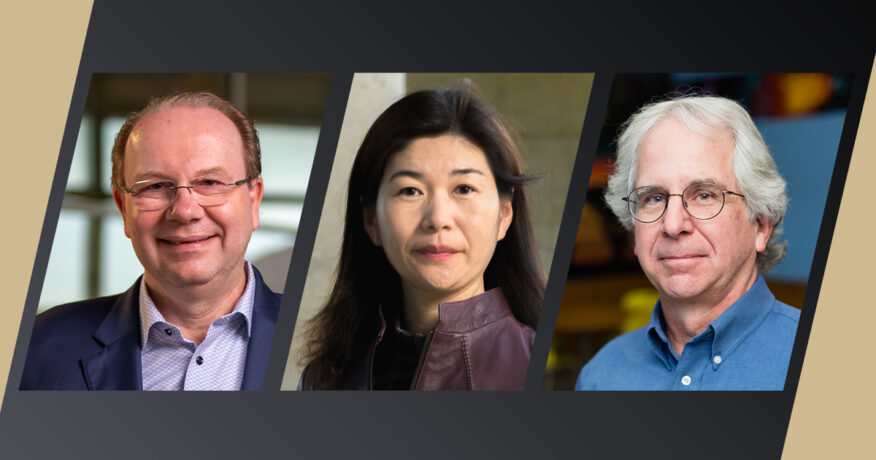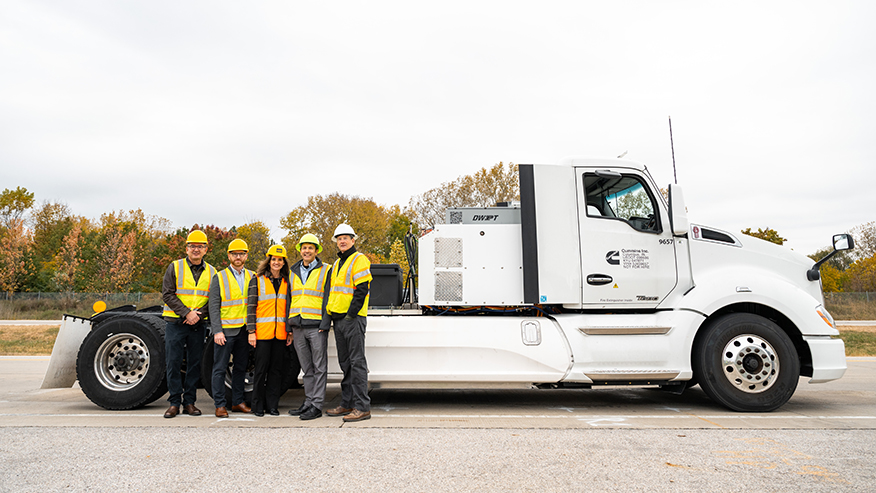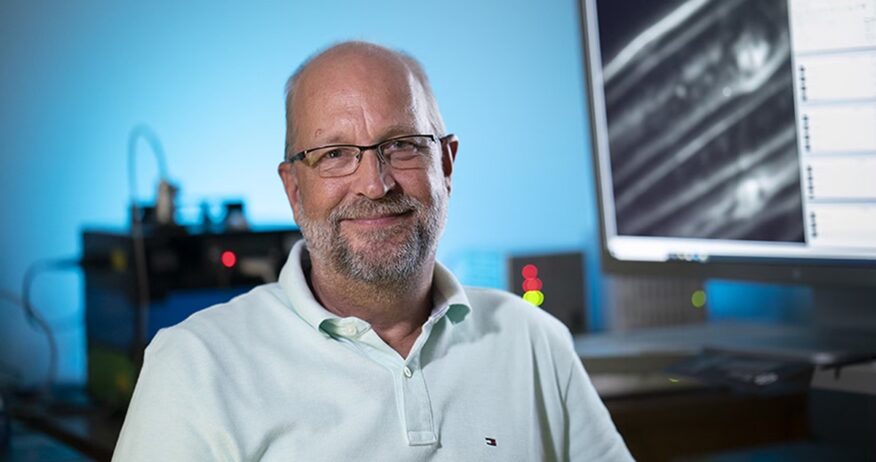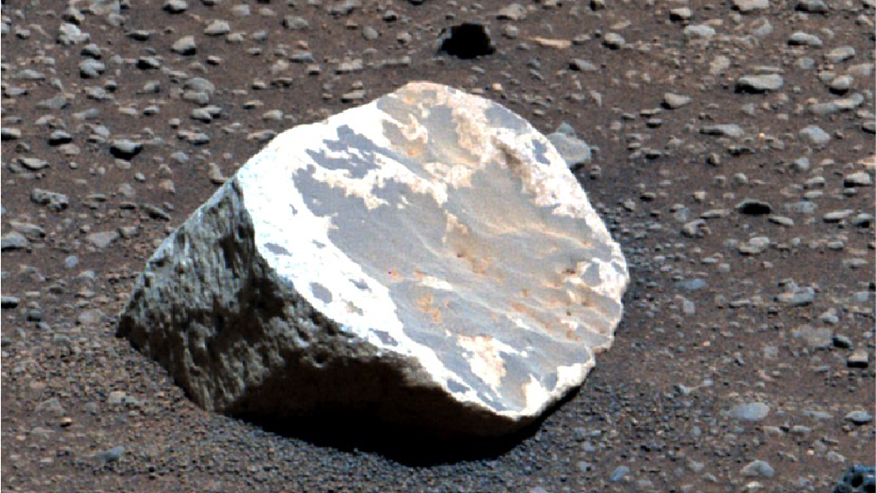Purdue innovations enable high-quality chemical analysis beyond the lab
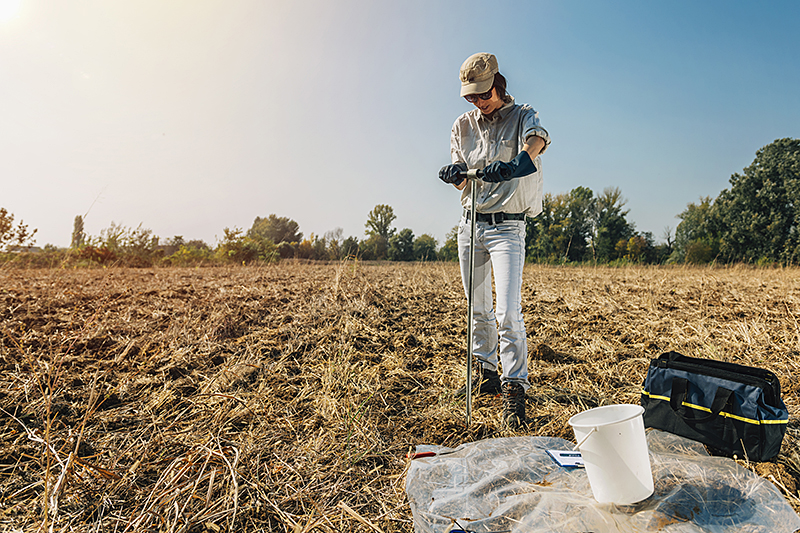
An agronomist takes a sample with soil probe sampler. Purdue University engineers have created a suite of technologies to enhance methods to detect, identify and quantify chemicals in a range of natural, industrial and consumer settings. (Photo Credit: iStockphoto.com)
WEST LAFAYETTE, Ind. —
Patented and patent-pending technologies developed by Purdue University engineers enhance methods to detect, identify and quantify chemicals in a range of natural, industrial and consumer settings.
Joe Sinfield, professor of civil engineering, and researchers in his laboratory at Purdue University’s Lyles School of Civil Engineering, have created a suite of technologies to expand applications of Raman spectroscopy – a chemical analysis technique that makes use of light to assess the chemical composition of materials. The technique has traditionally been carried out with either expensive, sophisticated devices in controlled settings like laboratories, or lower-cost and much less capable instruments in harsher environments. When chemical differentiation, sensitivity and/or specificity is required, those in need of chemical analysis typically resort to taking samples of a substance to a laboratory for analysis, which can be expensive and time consuming.
“This tradeoff in performance has been driven by the inherent difficulties of performing chemical sensing in natural, industrial and consumer settings,” Sinfield said. “Measurements in the real world are subject to multiple forms of interference and often require analysis of chemicals that are present at low concentrations, which can affect the environment and/or human health.”
By taking advantage of recent advances in laser technologies, fiber optics and digital signal processing, the Purdue Civil Engineering Spectroscopy Laboratory has opened up the possibility to perform chemical analyses on a wide array of compounds with great sensitivity outside the laboratory, at low-to-moderate cost and with little need for expertise or sample preparation.
“We want those who work in natural and industrial environments to benefit from the sophisticated quantification capabilities that are traditionally available in a lab, and we are making this possible by addressing four main problems,” Sinfield said.
Overcoming optical interference from fluorescence
One of Sinfield’s inventions addresses interference from fluorescence. In Raman spectroscopy, light is focused on a material to make a measurement. A small fraction of that light scatters back from the material providing important information about its composition, which is what makes the Raman technique valuable. However, another portion of the light is often absorbed by the material and re-emitted as fluorescence.
“This fluorescence emission is spectrally broad, very strong and, in many contexts, overwhelms the desired scattering,” Sinfield said. “Emission of the fluorescence, however, takes time – several billionths of a second. Electrons have to absorb the incident energy, move to a higher energy state and then re-emit light to relax.
“We employ a very fast time-gating process that allows us to look at scattering from the molecule before significant fluorescence, giving us insight into the composition of materials in traditionally challenging settings.”
Correcting for physical interference from turbidity
Another of Sinfield’s technologies addresses problems created by objects in samples that typically aren’t of interest to researchers, like dust or soil particles. These particles can make liquids or solutions appear cloudy or turbid, which can interfere with chemical analyses.
“When we want a quantitative measurement of a chemical in a material — for example, in water, we want to be able to know its concentration — that is how much of the chemical is in a defined volume,” Sinfield said. “If there are particles that we don’t want to measure in the material, they are taking up space that can interfere with our control volume.”
Sinfield’s second patented technology addresses the problem.
“It automatically accounts for the volume occupied by suspended particles in a solution so that Raman measurements are truly representative of what is in the liquid,” Sinfield said. “This can be very important in water quality analyses, industrial processes or other settings involving fluids.”
Achieving sensitivity in low-concentration settings
“While overcoming obstacles like fluorescence and turbidity is helpful in many situations, some contexts are even more challenging in that there may be a need to detect very small quantities of chemicals,” Sinfield said. “This is especially important when chemicals may be hazardous at very low concentrations. While sensitive Raman measurements like these are routinely performed in the laboratory, they are very difficult to carry out in less-controlled environments.”
Two of Sinfield’s inventions enhance Raman system sensitivity to enable chemical analyses in these challenging situations. One is an extension of what is sometimes called single-photon counting. Sinfield’s technology makes use of digital signal processing algorithms to interpret the output of optical detectors based on the energy of individual photons of light, which enables a system equipped with the algorithms to detect small amounts of chemicals that scatter very small amounts of light.
“While a typical flashlight might emit about 100 billion billion photons per second, low-concentration chemicals scatter very few in the same amount of time. We can see even just one photon and count it,” Sinfield said.
“In many cases, we can look at compounds of interest that are important for industrial process control or for the environment in difficult settings and get accurate measurements at very low concentrations. In detection scenarios, we don’t have to wait until something is at a very high concentration to discover it. We can see it early and tell how much is there.”
Sinfield’s technique also improves a sensor’s dynamic range, meaning that a single system can examine both low-concentration and high-concentration compounds, tolerating both weak and strong scattering response.
Another sensitivity-enhancing patent from Sinfield’s group pertains to the detection of chlorinated solvents. These compounds were once used as degreasers in dry cleaning, automotive and military applications and are now known to be harmful to human health at very low concentrations in ground water. Although they are typically very difficult to detect and monitor, Sinfield’s group found that they can see the compounds without looking specifically for them.
“It turns out that their presence in water fundamentally changes the water. Just a small concentration changes the Raman signature of the bulk water,” Sinfield said. “So rather than looking for a compound that has a very low concentration, we can look for changes in the signature of the water that tell us that the chlorinated solvents are present. This inferential sensing capability allows the sensor to infer that the compound is there by looking at the bulk solvent, which is much easier to examine.”
Enabling spatially dispersed analyses
Even when sensitivity can be achieved in measurements in one location, it may be important to gather information at multiple locations to assess chemical distribution in an environment or monitor chemical concentration at different points in a process. With many traditional analysis methods, this can require the use of multiple sensors and/or repeated and costly sampling and subsequent laboratory analyses.
“We have enhanced our laser-based Raman system with long-distance fiber optics and optical switches similar to those used in the telecommunications industry,” Sinfield said. “We can send light through a fiber to multiple locations through an all-optical switch and conduct chemical analysis at a distance. Depending upon the sensitivity required and the chemicals of interest, we can place a sensing node in one location and other sensing nodes meters or kilometers away and make measurements at each point from one instrument. Through electronic control of the optical switch, we have the potential to evaluate conditions at different locations in a matter of seconds to minutes.”
Sinfield disclosed these spectroscopy innovations to the Purdue Research Foundation Office of Technology Commercialization.
“Our team is excited to put our technologies into practice, to enhance existing Raman spectroscopy systems or develop entirely new instruments for previously unaddressed applications,” Sinfield said. “The technologies we have developed are very versatile.”
Industry partners seeking to option or license these innovations should contact Dhananjay Sewak, dsewak@prf.org, about reference number 64902 for overcoming fluorescence, 2014-SINF-66635 correcting for turbidity, 2021-SINF-69456 for low-concentration settings and 2022-SINF-69571 for spatially dispersed analysis.
About Purdue University
Purdue University is a top public research institution developing practical solutions to today’s toughest challenges. Ranked in each of the last four years as one of the 10 Most Innovative universities in the United States by U.S. News & World Report, Purdue delivers world-changing research and out-of-this-world discovery. Committed to hands-on and online, real-world learning, Purdue offers a transformative education to all. Committed to affordability and accessibility, Purdue has frozen tuition and most fees at 2012-13 levels, enabling more students than ever to graduate debt-free. See how Purdue never stops in the persistent pursuit of the next giant leap at https://purdue.edu/.
About Purdue Research Foundation Office of Technology Commercialization
The Purdue Research Foundation Office of Technology Commercialization operates one of the most comprehensive technology transfer programs among leading research universities in the U.S. Services provided by this office support the economic development initiatives of Purdue University and benefit the university’s academic activities through commercializing, licensing and protecting Purdue intellectual property. The office is housed in the Convergence Center for Innovation and Collaboration in Discovery Park District at Purdue, adjacent to the Purdue campus. In fiscal year 2020, the office reported 148 deals finalized with 225 technologies signed, 408 disclosures received and 180 issued U.S. patents. The office is managed by the Purdue Research Foundation, which received the 2019 Innovation and Economic Prosperity Universities Award for Place from the Association of Public and Land-grant Universities. In 2020, IPWatchdog Institute ranked Purdue third nationally in startup creation and in the top 20 for patents. The Purdue Research Foundation is a private, nonprofit foundation created to advance the mission of Purdue University. Contact otcip@prf.org for more information.
Writer: Steve Martin, sgmartin@prf.org
Source: Joe Sinfield, jvs@purdue.edu
